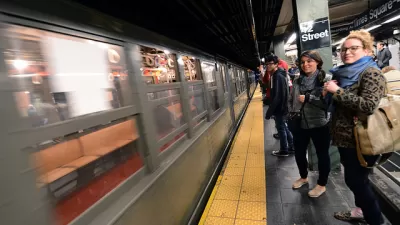A Forbes contributor provides analysis of how much states stand to lose if the Trump Administration succeeds in cutting funding for the Community Development Block Grants program.

Erik Sherman reports on the potential impact to the Community Development Block Grant (CDBG) program should cuts proposed by the Trump Administration's budget "blueprint" gain approval.
While much of the social media outcry following the budget announcement focused on concern for Meals on Wheels programs (concerns Sherman says were misplaced in a separate article), the underreported consequence of cuts to CDBG could impact every state in the country.
CDBG is a series of block grants made to states and municipalities. Local organizations parcel out the funds, which are integral to the operation of many community-based non-profits. They include local groups that provide meals to seniors, daycare centers for people of low income (many local Head Start programs, for example), network revitalization, economic development, infrastructure and public services, and more. Is there waste? Perhaps. Is there good done? From what I've seen, yes.
Sherman does his own analysis (in lieu of the Trump Administration undertaking the same effort) to figure out the total grants made to entities in each state, and calculated the CDBG funding per capita in each. A few findings from those results: cuts to the CDBG program would affect populous states the most.
FULL STORY: Trump Community Development Block Grant Cut Would Affect Millions

Maui's Vacation Rental Debate Turns Ugly
Verbal attacks, misinformation campaigns and fistfights plague a high-stakes debate to convert thousands of vacation rentals into long-term housing.

Planetizen Federal Action Tracker
A weekly monitor of how Trump’s orders and actions are impacting planners and planning in America.

In Urban Planning, AI Prompting Could be the New Design Thinking
Creativity has long been key to great urban design. What if we see AI as our new creative partner?

Baker Creek Pavilion: Blending Nature and Architecture in Knoxville
Knoxville’s urban wilderness planning initiative unveils the "Baker Creek Pavilion" to increase the city's access to green spaces.

Pedestrian Deaths Drop, Remain Twice as High as in 2009
Fatalities declined by 4 percent in 2024, but the U.S. is still nowhere close to ‘Vision Zero.’

King County Supportive Housing Program Offers Hope for Unhoused Residents
The county is taking a ‘Housing First’ approach that prioritizes getting people into housing, then offering wraparound supportive services.
Urban Design for Planners 1: Software Tools
This six-course series explores essential urban design concepts using open source software and equips planners with the tools they need to participate fully in the urban design process.
Planning for Universal Design
Learn the tools for implementing Universal Design in planning regulations.
planning NEXT
Appalachian Highlands Housing Partners
Mpact (founded as Rail~Volution)
City of Camden Redevelopment Agency
City of Astoria
City of Portland
City of Laramie





























